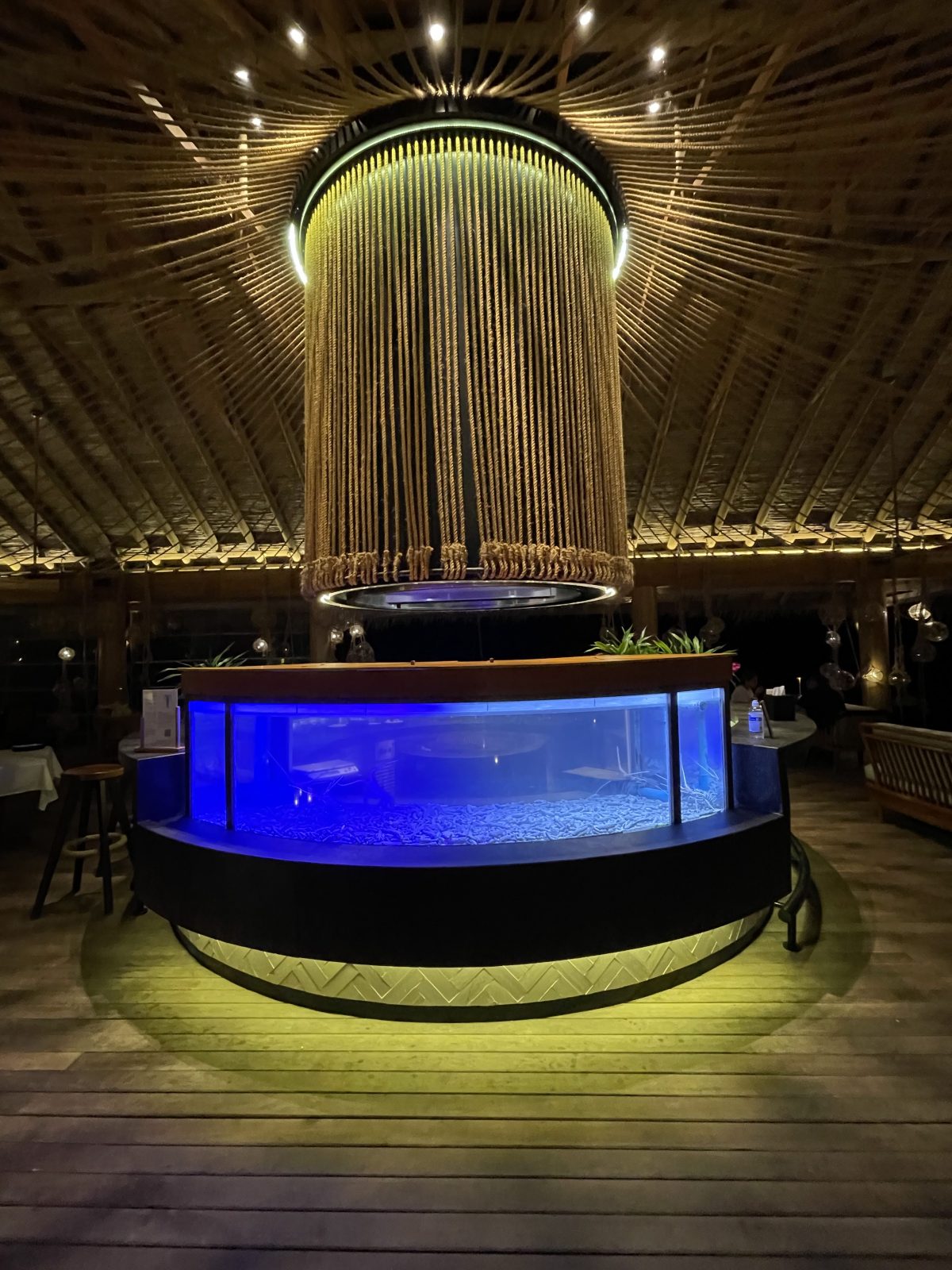Ultimate Travel Guide to: the MaldivesBy Howard Malin
Looking for an exotic holiday this year? We sent our Travel Editor Howard Malin to the Maldives to discover some of the island’s hidden treasures. Tough gig, but someone has got to do it…
Maldives: The Lowdown
How low can you go? Jericho may be the lowest city on earth, but the Maldives (literally, the islands of Malé), stretching across 871 kilometres, south-west of Sri Lanka, is the lowest nation on earth.
If this idyllic archipelago of 1192 islands (only two hundred of which are inhabited) set in the warm waters of the Indian Ocean, summons images of Sir Philip Green’s wild birthday parties and lifestyles of the rich and famous – you need to think again, because the reality is very different – these islands are remarkably accessible to everyone.
Admittedly your budget will influence your choice of resort island- but the holy trinity of a good vacation – sun, sea and sand – are abundant everywhere. And what an unbeatable trinity they are!
The Maldives are all about the islands and the outdoors – you’ve heard it all before, I’m sure – the whitest of sandy beaches, swaying coconut palms and lush tropical bushes, translucent turquoise waters and coral reefs teaming with marine life – and it’s all true! The islands provide a magical backdrop to simply soaking up the sun and detoxing from our harried city lives.
There are regular flights to Malé, the capital city, home to approximately two hundred thousand of the roughly half a million local Maldivians. I travelled with Emirates (my first time), via Dubai, and they really are very good indeed, with superb service. Covering an area of only 3.2 square miles, Malé is the 5th most densely populated city in the world – providing a stark contrast to the blissful and lushly planted resort islands, circled by their famous coral reefs.
The culture of these islands is ancient, dating back over 2500 years, and is a fusion of Indian, East African and Arabian (due to trade and settlers) – and the music, dance, art and cuisine reflect this. The main language here is Dhivehi, and the main religion is Islam – thus modest dress is required when not on resort islands.
Take your music, take your books, take your partner – The Maldives offer the complete antidote to the difficult time most of us have had over the past couple of years. I came home refreshed, revitalised, and recharged.
Maldives: What to Expect
I wish that I had paid more attention in English classes at school. Of all the travels I’ve had the pleasure to undertake for About Time Magazine over the past few years, this is the one where I have run out of superlatives. I just don’t have the vocabulary to express the utter beauty of these islands, nor the literary skills to convey the sheer and unabashed luxury of the resorts.
The beauty of it all is that there is no-where to go, except within the boundaries of your chosen island, nothing to do except indulge yourself, de-stress, enjoy the activities, relax and eat! It really is swim, sleep, eat – repeat!
Most activities at the resorts are based around the sea – snorkelling, scuba diving, fishing, paddle boarding, dolphin watching and the like – but for landlubbers, depending on your resort, there are also health clubs, tennis, pools, spas and bicycles – and of course, simply soaking up the sun! The resort island experience is rather akin to being on a luxury cruise, without the swaying and the shows!
Maldives: Where to Stay
Probably the most stressful thing about The Maldives is choosing your resort – most visitors head for Kaafu, the group of well-connected islands in the North and South Male Atolls.
The adage goes – you get what you pay for – and this is very true of the resort islands (as opposed to the islands inhabited by the locals) – the rule here being one resort to one island. I was so lucky to be invited to two stunning luxury resorts, and both excelled in their respective leagues. It’s not fair to compare them since the price differential between categories and islands is great, and I’ll be blessed to return here, at any level of resort, the natural beauty of these islands does not need the embellishment of food, service or amenity – they are stunning and enjoyable at every level, even the most basic
Whilst I would recommend heading straight for a resort island if your budget allows, some choose to stay on local islands (where locals live and work, with hotels, guest houses, shops, cafes and restaurants, as opposed to the resort islands which are exclusive to a particular hotel). These local islands, like Maafushi, and reached from Malé by ferry, offer very affordable accommodation. From these one can take day trips to enjoy activities such as fishing, dolphin watching and snorkelling, on the speedboat charter services and ferries, or indeed to other resort islands where a day-rate may be available to enjoy their facilities.
The resort islands are well connected to Malé by Trans Maldivian Airlines, the world’s largest seaplane operator. Whatever I write here, nothing can prepare you for your first arrival at one of the resorts by seaplane – as you swoop low over the coral reefs and pale waters to land at one of the resorts – in my fortunate case – The Standard Maldives on Huruvalhi.
Stepping from the sweltering seaplane on to the breezy sea platform to then be whisked ashore in the waiting speedboat and shown to a simply astounding luxurious overwater villa, with the biggest bathroom I’ve ever seen, complete with glitter ball hovering over a bath big enough for 10, was just such a surprise out here in the Indian ocean. The Standard is cool, sophisticated and laid back – as you would expect from this brand. The spacious overwater villas are five-star, with private plunge pools, versatile lighting (including a disco setting!), and behind the sumptuous bed, their unique activity wall, complete with lifejackets, snorkels, flippers, waterproof duffel bag, underwater torch – and a giant pink rubber ring – which wouldn’t look out of place in an Ann Summers shop!
As you would expect, much of the resort experience is based around food, and The Standard doesn’t disappoint, with 6 restaurants and bars. From the main restaurant hub of the buffet-style Kula – to the delicious Maldivian cuisine served at Guduguda – you can rest assured I didn’t lose any weight on this trip and am typing this review with fingers freshly fattened after five days of the most delicious foods!
The Standard, in addition to many water sports, offers an array of activities – with a tranquil spa, fully equipped health club and tennis court – and even a night club hovering over the water. Cycling around the small island on the free bikes (beware cycling back to your overwater villa if you’ve had one too many, the cycle pathways being quite precarious), this resort really did offer everything I could wish for in my search for a full detox and recharge. I didn’t want to leave – being unable to imagine anywhere more indulgent or luxurious. But that was a treat to come next (albeit in a different price category).
It’s amazing how quickly one can become blasé about seaplane rides. My first such flight to The Standard from Malé was so exhilarating, but when it came to flying off to my second resort – The Fairmont Sirru Fen Fushi – I took it all very much in my stride, only then to be totally blown away by the right royal welcome on their arrival jetty. Oh, my word – twenty waving staff lining the walkway, offering freshly hewn coconut husks with their sweet milk, and chilled towels for my beaded brow – and a welcoming bongo player no less! And it got even better from there.
My beach side (sunrise) villa at The Fairmont was off-the-scale amazing – with its’ own stretch of sandy beach, sun beds and a shaded hammock around the private pool, indoor and outdoor bathrooms (with a bath fit for Hugh Heffner), a bedroom to die for and a bed so comfy, I peeled back the linens (600 thread count obvs ) to see what make it was. Of course, the villa also came with its own butler, on call at the end of a hotel-supplied mobile phone!
When it came to the food – The Fairmont really elevated itself by the quality and standard of the wide-ranging menu in Raha Market – their main buffet and restaurant hub. Head chef Kumar has joined after 18 years at Shangri-la hotels – and serves up a stunning selection of Indian and international dishes. This really is the full five-star experience. I don’t know what’s wrong with me, but I can’t help myself when it comes to a buffet – certainly of this standard– and after a few days, I was beginning to regret the weighing scales thoughtfully tucked under the sink in my bathroom!
The resort offers three speciality restaurants – Onu Onu, serving beach snacks and cocktails under its bamboo roof, Kata offering truly delicious Japanese fare, and the brilliant Azure, perched over the water, with its daily changing seafood menus. I won’t easily forget their lobster seafood platter!
Quite apart from the villas and facilities, which include the longest pool in the Maldives– the service here is remarkable – the staff are unfailingly welcoming, polite and charming. Nothing is too much trouble – and this made for the perfect stay. I really couldn’t have wished for more.
One most important feature at The Fairmont is their work and investment in sustainability. There is rightly much emphasis placed on eco-tourism and the environment – unless global warming is slowed, Malé and 80% of the islands may well be under water by 2050. Amazingly, out of over 90,000 square kilometres, there are only 298 square kilometres of dry land! Sam Dixon is the resident marine biologist at Fairmont (and from Bridlington no less!) and his dedication and commitment to sustainability, with amongst other initiatives, the launch of the only plastics recycling centre on the islands, are vital to the survival the islands.
I was so lucky to be the guest of The Standard Maldives and Fairmont Sirru Fen Fushi on this trip – and would hop right back there, if I wasn’t busy planning more trips to review for About Time Magazine’s world travellers!
Maldives: What to See
Islands and atolls – head for the beaches, seas, and coral reefs!
In Malé itself, if you have time before a flight from the international airport, head over to see:
- -Malé local market, teaming with fish vendors, reflecting the sights, sounds and smells of the Maldives
- -Artificial Beach – and see how the locals relax and enjoy the beach. Great view too, of the Chinese-Maldives Friendship Bridge.
- -Old Friday Mosque – dating from 1658
- -The National. Museum in Sultan Park
- -The Tsunami Monument, erected to commemorate those who perished in the Boxing Day Tsunami of 2004, in Tin Ruh Park, south east Malé.
Maldives: What to Eat
Don’t miss the coconut fish curry dishes. Try tuna masuni– the traditional Maldivian breakfast which mixes tuna, coconut and spices. Maldivian cuisine relies mostly on local produce of fish, coconut, starch – and pineapple.
Maldives: What to Buy
Don’t expect a Westfield shopping centre here! Look out for local artisan items – woven palm mats, lacquered wooden ornaments and coral carvings on local islands and in Malé.
Maldives: How to Get There
Direct flights from major airports and major airlines to Malé during high season, and via Dubai or other hubs to Malé in low season.
Maldives: How to Get Around
On foot, bike or buggy – there are no cars on the resort islands.














